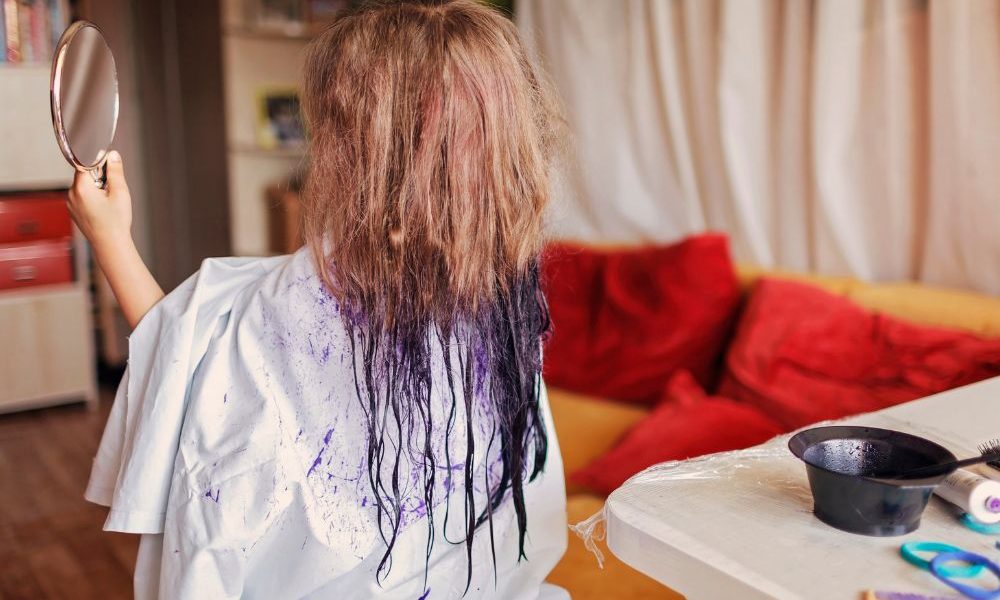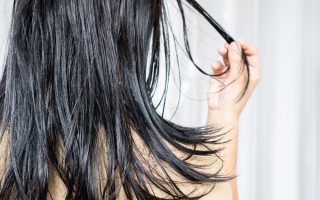Coloring your hair at home can be a fun and rewarding experience, especially when you use natural ingredients. Natural hair dyes offer a gentle and nourishing alternative to conventional hair colors, which can be harsh on your hair and the environment. This article will explore various natural options for dyeing your hair, provide step-by-step instructions, and share some personal anecdotes to help you achieve beautiful, vibrant results safely at home.
Why Choose Natural Hair Dyes?
Benefits of Natural Hair Dyes
- Gentler on Hair: Natural dyes do not contain harsh chemicals like ammonia and peroxide, which can strip your hair of its natural oils and cause damage. Aviva Perlmutter, founder of The Hippy Homemaker, notes, “Natural hair dyes offer a gentle and nourishing alternative to conventional hair color. They are not only safer for your hair but also for the environment” (Source: The Hippy Homemaker Blog).
- Environmentally Friendly: Natural hair dyes are typically made from plant-based ingredients, making them biodegradable and less harmful to the environment. A study in the Journal of Cleaner Production highlights the significant environmental benefits of using natural dyes over conventional ones.
- Safe for Sensitive Scalps: People with allergies or sensitivities to chemical hair dyes can benefit from using natural options. Dr. Axe points out, “Natural hair dyes are a safer alternative for people with allergies or sensitivities to chemical hair dyes. They are also a great option for pregnant and breastfeeding women who want to avoid potentially harmful chemicals” (Source: Dr. Axe Website).
Ingredients in Natural Hair Dyes
Natural hair dyes use a variety of plant-based ingredients to achieve different colors. Here are some popular options:
- Henna: Known for its vibrant red hues, henna is derived from the leaves of the Lawsonia inermis plant. It not only colors your hair but also conditions it, leaving it shiny and smooth.
- Indigo: Often used in combination with henna, indigo provides darker shades ranging from brown to black. It comes from the Indigofera tinctoria plant.
- Chamomile: Chamomile flowers can be used to lighten hair and add golden highlights. It’s a great option for those with blonde or light brown hair.
- Coffee: Coffee can be used to darken hair and add rich brown tones. It’s a simple and effective way to enhance your natural color.
- Beet Juice: For a reddish tint, beet juice can be applied to the hair. It works well for those looking to add subtle color and shine.
How to Dye Your Hair Naturally at Home
Step-by-Step Guide
1. Henna for Red Hair
Ingredients:
- 100g of henna powder
- 1 cup of warm water or tea
- 1 tablespoon of lemon juice
Instructions:
- Mix the henna powder with warm water and lemon juice until it forms a thick paste.
- Let the mixture sit for a few hours or overnight to allow the dye to release.
- Apply the paste to clean, damp hair, making sure to cover all strands evenly.
- Cover your hair with a shower cap and leave the henna on for 1-4 hours, depending on the desired intensity.
- Rinse thoroughly with water until the water runs clear. Avoid using shampoo for the next 24-48 hours to allow the color to set.
2. Indigo for Brown/Black Hair
Ingredients:
- 100g of indigo powder
- 1 cup of warm water
Instructions:
- Mix the indigo powder with warm water to form a smooth paste.
- Apply the paste to your hair immediately after mixing.
- Cover your hair with a shower cap and leave the indigo on for 1-2 hours.
- Rinse thoroughly with water. As with henna, avoid using shampoo for 24-48 hours.
3. Chamomile for Lightening Hair
Ingredients:
- 1 cup of chamomile flowers or 4 chamomile tea bags
- 2 cups of water
Instructions:
- Boil the water and steep the chamomile flowers or tea bags for 30 minutes.
- Let the mixture cool, then strain out the flowers or remove the tea bags.
- Apply the chamomile tea to clean, damp hair.
- Sit in the sun for 30-60 minutes to enhance the lightening effect.
- Rinse your hair with cool water and style as usual.
Personal Anecdote: My Experience with Henna
I remember the first time I used henna to dye my hair. I was nervous about the mess and unsure of the results, but I was pleasantly surprised. The process was simple, and the earthy smell of the henna was quite soothing. After rinsing it out, my hair was a vibrant shade of red and felt incredibly soft. It was a fun and rewarding experience that made me feel more connected to natural hair care practices.
Tips for Maintaining Your Natural Hair Color
- Use Sulfate-Free Shampoo and Conditioner: Sulfates can strip your hair of its natural oils and fade your color faster. Opt for gentle, sulfate-free products to maintain your color.
- Avoid Heat Styling: Excessive heat can cause color to fade. Try to limit the use of heat styling tools and always use a heat protectant when you do.
- Deep Condition Regularly: Natural hair dyes can be drying, so it’s important to keep your hair hydrated. Use a deep conditioning treatment once a week to maintain moisture and shine.
- Protect Your Hair from the Sun: UV rays can cause color to fade. Wear a hat or use a UV protectant spray when spending extended periods in the sun.
Personal Anecdote: Keeping My Henna Color Vibrant
To keep my henna color looking fresh, I started using a sulfate-free shampoo and conditioner. I also deep condition my hair once a week with a coconut oil mask. These small changes made a big difference in the longevity of my color and the health of my hair.
Unique Insights and Studies
The Science Behind Natural Hair Dyes
Natural hair dyes work by coating the hair shaft rather than penetrating it, which is how chemical dyes work. This means they are less likely to cause damage and can actually improve the condition of your hair over time. A study in the International Journal of Trichology examined the safety and efficacy of natural hair dyes, including henna and indigo. The findings concluded that natural dyes can be a safe and effective alternative to chemical dyes, particularly for those with sensitive scalps or allergies.
Environmental Impact
Using natural hair dyes can significantly reduce your environmental footprint. Conventional hair dyes often contain chemicals that can pollute waterways and harm aquatic life. A study published in the Journal of Cleaner Production compared the environmental impact of conventional and natural hair dyes, highlighting the substantial benefits of using plant-based ingredients. Natural dyes are biodegradable and do not contribute to water pollution, making them a more eco-friendly choice.
Conclusion
Switching to natural hair dyes can be a rewarding journey that benefits both your hair and the environment. Whether you’re looking to enhance your natural color, cover grays, or experiment with a new shade, there’s a natural option for you. Remember to choose the right ingredients for your hair type and concerns, and follow the step-by-step instructions for the best results.
As Aviva Perlmutter says, “Natural hair dyes offer a gentle and nourishing alternative to conventional hair color. They are not only safer for your hair but also for the environment” (Source: The Hippy Homemaker Blog). So why not give natural hair dyes a try? Embrace the beauty of plant-based coloring and enjoy the process of creating your own unique look.




